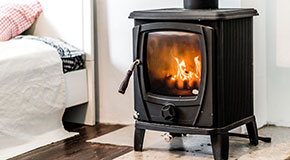-

-
 Email Now solidfuel3@aol.com
Email Now solidfuel3@aol.com

We believe that buying wood burning stove is such an important purchase that once we have installed your stove we will continue to be there to provide you with long-term advice or help, for as long as you may require.
We can supply any stove of any make and make arrangements to have it delivered on installation date saving the hassle of moving the appliance if customer orders it.
Contact us today, we can offer great advice on stove selection and installation, whatever your circumstances.
Quality wood-burning stoves need to meet some of the strictest environmental standards in the world. To highlight our environmental focus, we actively promote stoves that are certified to the highest standard. We will only fit fully CE approved stoves which have been tested to the highest standard.
All stove installations now come under building control, the following will give the basics for stove requirements. It is not intended to be a complete explanation and if in doubt reference should be made to ‘The Building Regulations 2010 Approved Document J Combustion Appliances and Fuel Storage Systems 2002 Edition’ or the building control department of your local council.
The 2010 edition of Approved Document J of The Building Regulations stipulates that any work that affects an existing chimney (ie fitting a new stove or liner) or creating a new chimney now comes under building control.
All wood-burning and multi-fuel stoves require a Class 1 chimney. Existing chimneys can be used, but they should be checked for air tightness and the correct diameter for the appliance to be used.
It may be necessary to sweep the flue (which should always be done anyway before fitting a stove or lining a chimney) and also, if necessary, to do a smoke test to check for gas tightness. Failing chimneys can be relined using a number of methods – one of the easiest methods being using a class 1 904/904 grade stainless steel liner. It is important to carry out a visual inspection to ensure that the flue is not in close proximity to combustibles.
A permanent notice/data plate should be fixed at an appropriate position giving details of the location of the fireplace, the type and size of the flue and type of heating appliance used.
Since 1st October 2010 a battery powered carbon monoxide detector must be fitted into the room where the stove has been installed. Without this, the competent installer will not sign off your installation.
PLEASE NOTE: The detector must have a sealed long-life battery. You cannot install a standard detector that has replaceable batteries.
Previously, any stove under 5kw did not require an air vent. As from 1st October 2010 the rules have changed slightly. If your house was built on or after 1992 you require an air-vent, regardless of the output of the stove. This is due to houses becoming more and more insulated and less draughty, thus giving rise to the need for replacement air into the room.
When you install a wood-burning or multi-fuel stove, the regulations state that you must step up to a 6″ flexible liner if you purchase a stove with a 5″ flue outlet. This rule applies to all stoves EXCEPT those which are Defra smoke control approved. If you purchase a Defra-approved stove you can now install a 5″ flexible liner. If your stove is not Defra approved you must increase to 6″ as always.